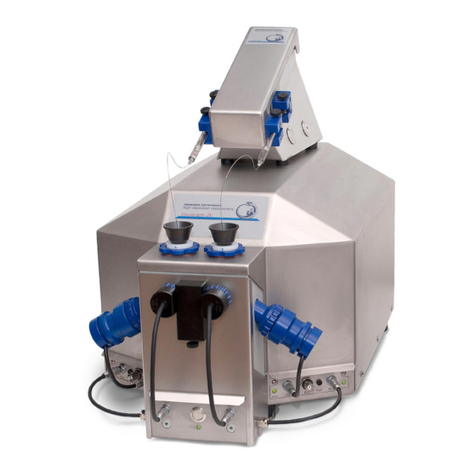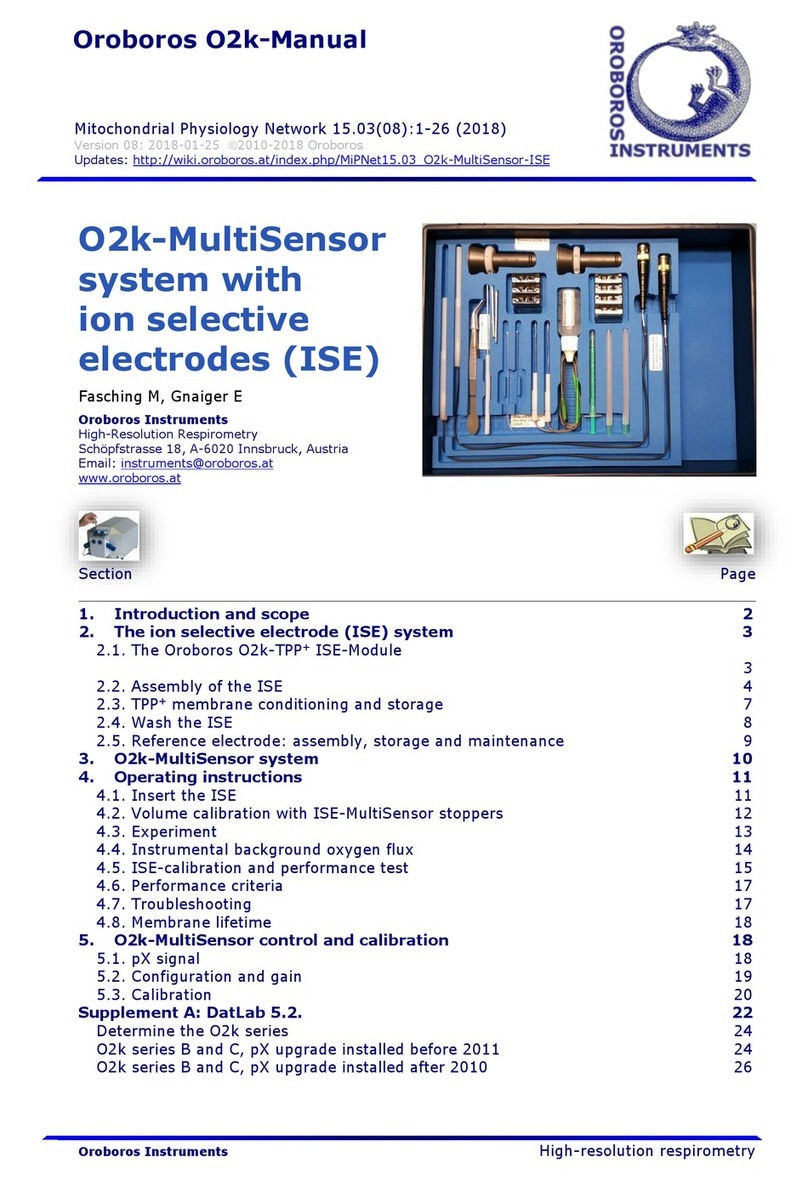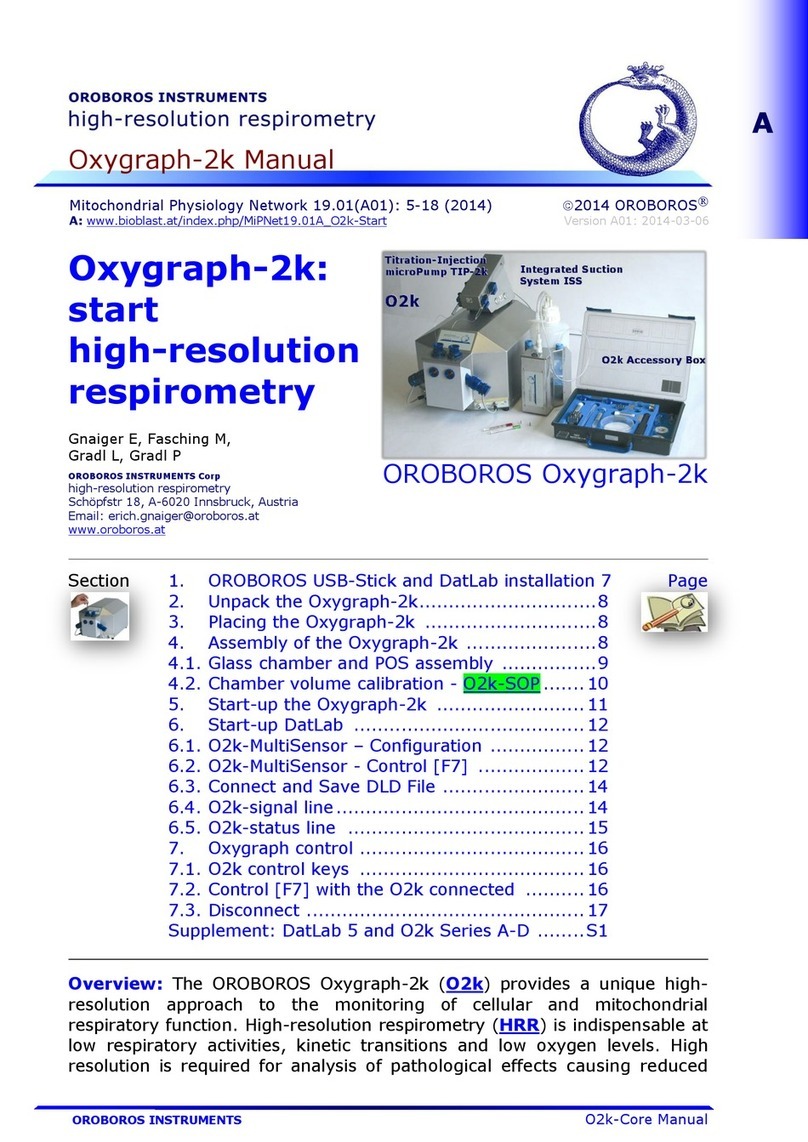MiPNet22.11 O2k-FluoRespirometer manual 10
Oroboros Instruments Mitochondria and Cell Research
6.2. Oroboros O2k \ O2k control
6.2.1. O2k control \ Tab: System
Open the O2k control \ System tab F7 to set the
operation mode of the O2k.
Load setup is an alternative to editing settings step-by-step. The
default is O2k-setup 25 °C or the O2k-setup which was
applied last when DatLab was connected to the O2k. O2k
control settings of the selected setup are displayed after
Lleft click on the Load setup button.
Save setup Save the O2k control settings. To create a new O2k-
setup, edit the name, and Lleft click on Save setup.
Block temperature [°C] L Left click on the input window (L
double click to overwrite all digits). Enter the block
(=experimental) temperature (range 2.0 to 47.0 °C).
Stirrer speed [rpm] The default is 750 rotations per minute
(12.5 Hz), which may be varied between 300 and 900
rpm for each chamber independently. The signal level
and signal stability increase with stirrer speed in the
region of low rpm, but uncoupling of the magnet occurs
at very high stirring speeds causing high signal noise.
Both chambers may be set at an identical stirrer speed.
Data recording interval [s] can be set between 0.2 s and 10 s,
identical for both chambers. The default of 2 s is optimal
for most applications. Do not decrease the data
recording interval unless necessary, since at low data
recording intervals, the apparent noise of flux is
increased and real-time information is reduced.
Stirrer power On/Off Toggle between On/Off to set the stirrer on
or off when connecting. Independent of this On/Off
setting, the left and right stirrers are switched on and off
during the experiment by pressing F11 and F12.
Illumination in chamber On/Off Toggle between On/Off to
switch the illumination on or off when connecting. It is
switched on and off during the experiment by pressing
F10. Illumination is different from the light intensity of
the Smart Fluo-Sensors.
Connect to O2k or Send to O2k to activate the displayed control
settings.
6.2.2. O2k control \ Tab: Oxygen, O2
Gain for sensor The default is a gain of 1 V/µA. This is sufficient in
most cases and provides the full scope for measurements
at all oxygen levels.































